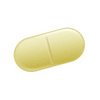 | Phexin (Cefalexilum monohydricum) Active Ingredient: Cephalexin Phexin (Cephalexin) is used for the treatment of bacterial infections of the respiratory tract such as middle ear, bones, pneumonia, reproductive, skin and urinary systems. Other names for this medication: Axcel cephalexin, Cefalexilum monohydricum, Cefalexin monohydrate, Cefalexina sodica, Cephalex r, Pharex cefalexin Show all |
INDICATIONS
Phexin (Cephalexin) is indicated in the treatment of the following infections: Respiratory tract infections; bone and joint infections; genito urinary infections, including acute prostatitis and dental infections.
Cefalexin is active against the following organisms: Beta-haemolytic streptococci; staphylococci, including coagulase-positive, coagulase-negative and penicillinase-producing strains; streptococcus pneumoniae; escherichia coli; proteus mirabilis; klebsiella species, haemophilus influenzae; branhamella catarrhalis.
Most strains of enterococci (streptococcus faecalis) and a few strains of staphylococci are resistant to cefalexin.
Cefalexin is not active against most strains of enterobacter species, morganella morganii, pseudomonas or herellea species.INSTRUCTIONS
Take the medicine as prescribed by your doctor.
DOSAGE
Adults
1-4 g daily in divided doses; most infections will respond to a dosage of 500 mg every 8 hours.
For skin and soft tissue infections, streptococcal pharyngitis and mild, uncomplicated urinary tract infections, the usual dosage is 250 mg every 6 hours, or 500 mg every 12 hours.
More severe infections, or those caused by less susceptible organisms may need larger doses.
If daily doses greater than 4g are required other parenteral cephalosporins, in appropriate doses, should be considered.
Elderly
As for adults although dosage should be reduced to a daily maximum of 500mg if renal function is severely impaired (glomerular filtration rate < 10ml/min).
Children
The recommended daily dosage for children is 2550 mg/kg in divided doses.
In the case of skin, soft tissue infections, streptococcal pharyngitis and mild, uncomplicated urinary tract infections, the total daily dose may be divided and administered every 12 hours.
For most infections the following schedule is suggested:
Children under 5 years:
Not recommended
Children 5 years and over:
250 mg every 8 hours.
In severe infections, the dosage may be doubled.
Clinical studies have shown that for otitis media a dosage of 75-100 mg/kg/day is required, in divided doses.
In the treatment of beta-haemolytic streptococcal infections, a therapeutic dose should be administered for at least 10 days.
Route of administration:
OralSTORAGE
Store Phexin at 77 degrees F (25 degrees C), in a tightly closed container. Brief storage at temperatures between 59 and 86 degrees F (15 and 30 degrees C) is permitted. Store away from heat, moisture, and light. Do not store in the bathroom. Keep Phexin out of the reach of children and away from pets.
If an allergic reaction to this drug occurs it should be discontinued and the patient treated with the appropriate agents. Prolonged use of Phexin may result in the overgrowth of non-susceptible organisms. Careful observation of the patient during therapy is essential and appropriate action should be taken should superinfection occur.
Pseudomembranous colitis (ranging in severity from mild to life-threatening) has been reported in association with use of virtually all broad -spectrum antibiotics, including macrolides, semi-synthetic penicillins and cephalosporins. Therefore, it is essential to take this into account during diagnosis of patients who develop diarrhoea during antibiotic therapy. Mild cases of pseudomembranous colitis usually respond to drug discontinuance alone whilst in more severe cases, appropriate measures should be taken.
Phexin should be administered with caution in the presence of markedly impaired renal function. Careful clinical and laboratory studies should be made because safe dosage may be lower than that usually recommended.Although laboratory and clinical studies have shown no evidence of teratogenicity, caution should be exercised when prescribing for the pregnant patient. Caution should be exercised in administration to a nursing mother. Following a 500mg dose, levels of 4 micrograms/ml have been detected in breast milk.
The side effects may include:
upset stomach;
diarrhea;
vomiting.
If you experience any of the following side effects, you should turn to your doctor immediately:
a skin rash;
itching;
hives;
breathing difficulties;
wheezing;
unusual bleeding or bruising;
sore throat;
vaginal infection.
More Information
If you suspect an overdose, seek emergency medical treatment immediately.
Symptoms of Phexin overdose may include:
Blood in the urine, diarrhea, nausea, upper abdominal pain, vomiting.
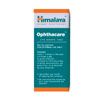 OphthacareOphthacare eye drops are effective in the management of infective and inflammatory eye disorders.as low as $38.68
OphthacareOphthacare eye drops are effective in the management of infective and inflammatory eye disorders.as low as $38.68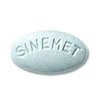 SinemetSinemet (Carbidopa/Levodopa) is used for treating symptoms associated with Parkinson disease and parkinsonism-like symptoms.as low as $0.94
SinemetSinemet (Carbidopa/Levodopa) is used for treating symptoms associated with Parkinson disease and parkinsonism-like symptoms.as low as $0.94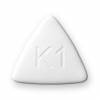 KytrilKytril is used to prevent nausea and vomiting that may be caused by medicine to treat cancer (chemotherapy or radiation).as low as $2.05
KytrilKytril is used to prevent nausea and vomiting that may be caused by medicine to treat cancer (chemotherapy or radiation).as low as $2.05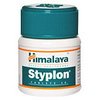 StyplonStyplon helps in the management of bleeding. as low as $39.8
StyplonStyplon helps in the management of bleeding. as low as $39.8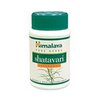 ShatavariThe roots of Shatavari or Asparagus racemosus have galactagogue, antispasmodic, appetizer, cooling, tonic and aphrodisiac properties.as low as $54.6
ShatavariThe roots of Shatavari or Asparagus racemosus have galactagogue, antispasmodic, appetizer, cooling, tonic and aphrodisiac properties.as low as $54.6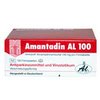 AmantadineAmantadine is used for preventing and treating certain types of flu. It is used to treat Parkinson disease and uncontrolled muscle movements caused by some medicines.as low as $0.8
AmantadineAmantadine is used for preventing and treating certain types of flu. It is used to treat Parkinson disease and uncontrolled muscle movements caused by some medicines.as low as $0.8